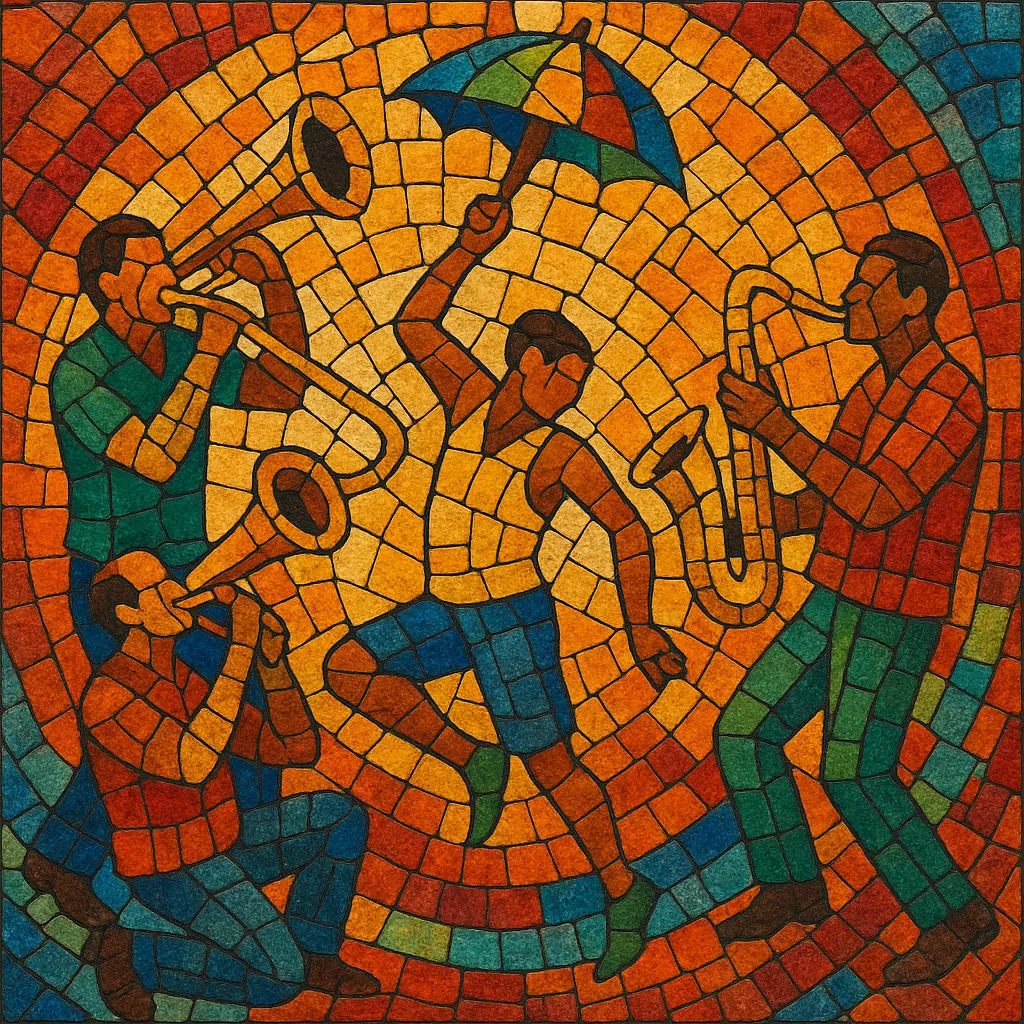Frevo de rua is the fast, instrumental brass-band branch of frevo from Recife and Olinda, in Brazil’s state of Pernambuco. It is written in duple meter (2/4), powered by tight percussion and brilliant, virtuosic lines for trumpets, trombones, saxophones, and clarinets.
Unlike frevo-canção and frevo de bloco, frevo de rua has no vocals; it is designed for street procession and acrobatic dance. Its driving syncopations, off‑beat accents, and sparkling countermelodies create a sense of urgency and celebration that animates Carnival parades.
Historically, it fuses European military and civic band traditions (dobrado and march), popular ballroom rhythms (polka and maxixe), and local Pernambuco idioms, yielding a uniquely Northeastern Brazilian carnival sound that is both technically demanding and irresistibly danceable.
Frevo de rua crystallized in Recife’s street Carnival in the early 1900s. Brass and woodwind bands (influenced by European military marches and the Brazilian dobrado) began accelerating tempo, intensifying syncopation, and layering countermelodies to energize crowds. The word “frevo” is commonly linked to the Portuguese verb “ferver” (to boil), a metaphor for the street’s boiling excitement.
By the 1910s–1930s, composers and bandleaders in Pernambuco codified the instrumental, vocalist‑free strain known as frevo de rua. Written in 2/4 at brisk tempos, the music favored bright major keys, quick modulations, and brilliant brass writing, while percussion (caixa, bombo, pratos) kept a relentless, clipped groove. Dancers (passistas) developed acrobatic steps with small, colorful umbrellas, a visual hallmark inseparable from the music’s rhythmic punch.
From the mid‑20th century forward, renowned maestros and orchestras expanded the repertoire, while recordings and radio broadcast the sound beyond Pernambuco. Electric-guitar adaptations during Carnival trios in Bahia helped seed later developments, and contemporary big-band projects revitalized the form on concert stages.
Frevo—encompassing its de rua, de bloco, and canção modalities—was inscribed by UNESCO on the Representative List of the Intangible Cultural Heritage of Humanity in 2012. Frevo de rua remains the propulsive street engine of Pernambuco’s Carnival, a living tradition sustained by community bands, conservatories, and modern orchestras.
Use a street band setup emphasizing brass and reeds: 2–4 trumpets, 2–3 trombones, alto/tenor/baritone saxophones, clarinets, and a low brass/tuba or sousaphone. Percussion should be crisp and projecting: caixa (snare), bombo (bass drum), pratos (cymbals), and occasionally repique.
Write in 2/4 at brisk tempos (typically 140–170 BPM). Accentuate off‑beats and use tight, short articulations (staccato/marcato) to create forward drive. Percussion patterns interlock: caixa executes brisk rudiments and constant subdivisions; bombo marks downbeats; pratos punctuate phrase peaks.
Craft bright, fanfare-like melodies with rapid scale runs, chromatic approach tones, and octave leaps. Arrange frequent call‑and‑response between brass and reeds, layering countermelodies to maintain intensity. Keep melodic cells short and sequential, allowing dancers to synchronize acrobatic steps.
Favor diatonic major keys friendly to winds (F, Bb, Eb), with secondary dominants, quick tonicizations, and occasional chromatic passing chords. Use multi‑strain march forms (e.g., AABBCC or AABBCCDD), each strain 8 or 16 bars, with modulations to heighten excitement. Insert brief breaks to showcase percussion or to cue visual stunts.
Balance brilliance (trumpets) with body (trombones, saxes) and clarity (clarinets). Write unison rip‑lines for impact, then explode into tight voicings. Emphasize crisp articulations, sharp dynamic swells, and climactic tuttis.
Maintain relentless energy and precise ensemble timing. Leave space for dance cues and street movement (entradas/saídas, quick cadence tags). Rehearse transitions and breaks so the band can pivot smoothly between strains during parades.


